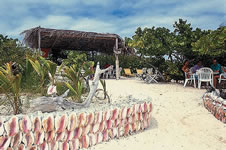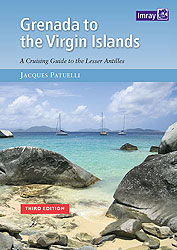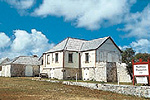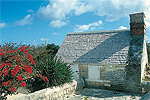| |
|

Out at the archipelago’s northern
extremity, Anguilla is the last of the
Leewards before you reach the Virgins.
When they discovered it the Spanish
called it Anguilla (‘the eel’) because of its
long flat shape. The original Amerindian
inhabitants had called it Malliouhana.
The English were the first colonists and
arrived in the 17th century. They tried,
without much success, to grow tobacco
and sugar cane on its meagre soil. The
English stayed in control throughout the
colonial period despite the nearby
presence of the French in St-Martin and
their attempts at conquest in 1745 and
1796. The first was swiftly repelled, but
during the second the British holed up in
the fort on Sandy Hill until they had
repulsed the enemy and were again
wholly masters of their island.
The island’s dry climate prevented any
major plantation development. And in
the 19th century the place was parcelled
out to the newly emancipated slaves and
a few poor white settlers who had
intermarried and from them today’s
population is descended.
Because of the English dominance,
Protestantism in all its forms – Anglican,
Methodist, seventh Day Adventists and
so on – is the main religion. There are
even a few Rastafarians, and it’s
interesting to remember that their
movement (its name taken from the
Negus Ras Tafari Haile Selassie of
Ethiopia) holds that the Ethiopians, not
the Jews, are the true descendants of
King Solomon.
Anguillans are fiercely loyal to their
island even if they’re exiles who, given
the poverty of their homeland, have gone to work elsewhere. Indeed some have
made their fortunes in the States or even
Britain. And like all Anguillans, even
those who have stayed at home in
poverty, they share in their island’s rich
past of master sailors and builders of
graceful schooners. It’s from this
background the islanders get their proud
and fiercely independent character.
When the British decided to
decolonise, the technocrats of the
Colonial Office decided to go for a tidy
solution and lumped Anguilla in with St
Kitts and Nevis, making St Kitts, the
largest island, the seat of government.
Becoming a colony of an old colony
wasn’t quite what the Anguillans fancied.
So they revolted and declared their island
free and independent. There was a vain
attempt by St Kitts to reconquer, but
their weak soldiery was swiftly pushed
back into the sea. Britain stirred from its
slumber and in 1969 sent a gunboat and
some assault troops. Luckily there were
neither fighting nor casualties. Following
UN intervention, in 1971 Anguilla
became an Autonomous Crown Colony
and then, in 1980, a British Dependent
Territory. These days there is a
constitution, an elected assembly and an
island government. A governor
represents the crown and looks after
foreign affairs and the administration of
justice. All those fiery events are now in
the past and the Anguillans have
returned to their fishing, thanks to the
island’s rich waters, its main natural
resource. You can add to that a few herds
of goats and the exploitation of the salt
pond at Sandy Ground.
|
|
|
|

Where to stay and what to see
Fishing, goats and salt were the economic
mainstay, until the 1980s, when the first
moves towards developing a tourist
industry were made. The wonderful
beaches and lovely small neighbouring
islets surrounded by coral reef were
attraction enough but in addition the
government has created several well
protected marine reserves to preserve the
rich submarine flora and fauna.
Since then big tourist money has
moved in and several hotels have been
built. Some of them are truly five star
with prices to match. There are also now
several small restaurants on the coast and
the islets owned not only by locals, but
by Europeans and Americans. They offer
a wide range of seafood menus with
pride of place given to the famous
langoustes. No matter whose restaurant
it is, you can be sure of a warm welcome,
though their popularity with tourists and
day charterers from St-Martin means
that prices are high. That said, compared
to St-Martin, come nightfall there’s little
going on. No discos. No casinos. The
Anguillans don’t want to lose their souls.
Around the island
If the coastline is superb, the bare, flat
interior has little going for it. A road runs
the length of the island with tracks
leading off it to the beaches and many
small villages, the small population being
very well spread out. Wallblake Airport,
which is very simple, has only interisland
flights.
Close by, The Valley, a very symbolic
micro-capital, has a few scattered houses
on their small plots, a few simple shops
and one or two government offices
including the Tourist Office. Otherwise
there’s only Wallblake Plantation House,
built in stone in 1787, which has an
exhibition of the island’s history. For
religious services there are two churches,
of which one, the neo-gothic confection
of St Gerard’s Catholic Church, has a
curious façade of stones. The Fountain
cave is one of the few natural sites to visit
provided it’s open (it is being done up).
The cave is the island’s sole spring and
was an important pre-Columbian
religious site, to which some petroglyphs and a stalagmite sculpted into the form
of Jacahu, an Amerindian deity, bear
witness.

|
|
|








